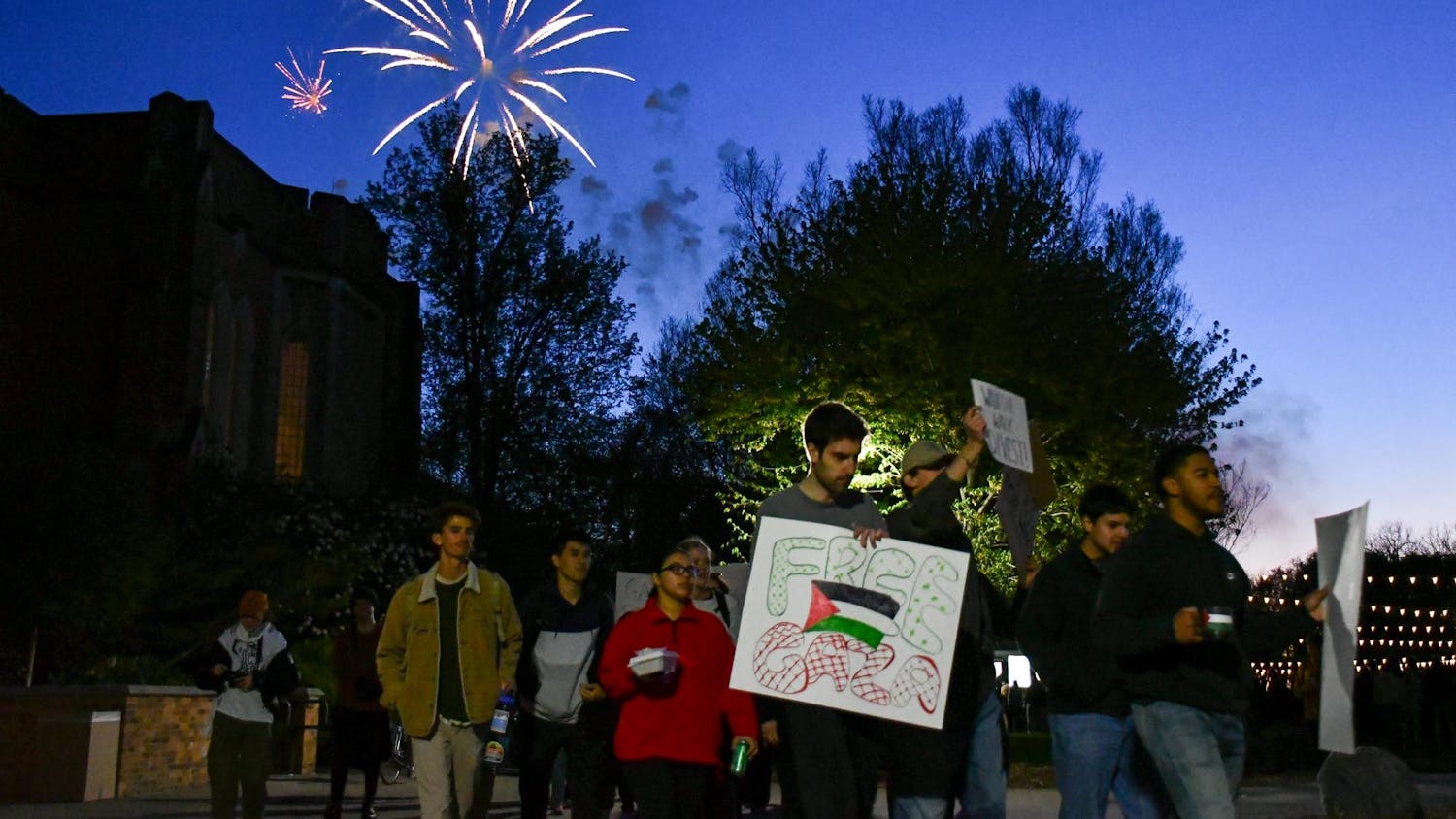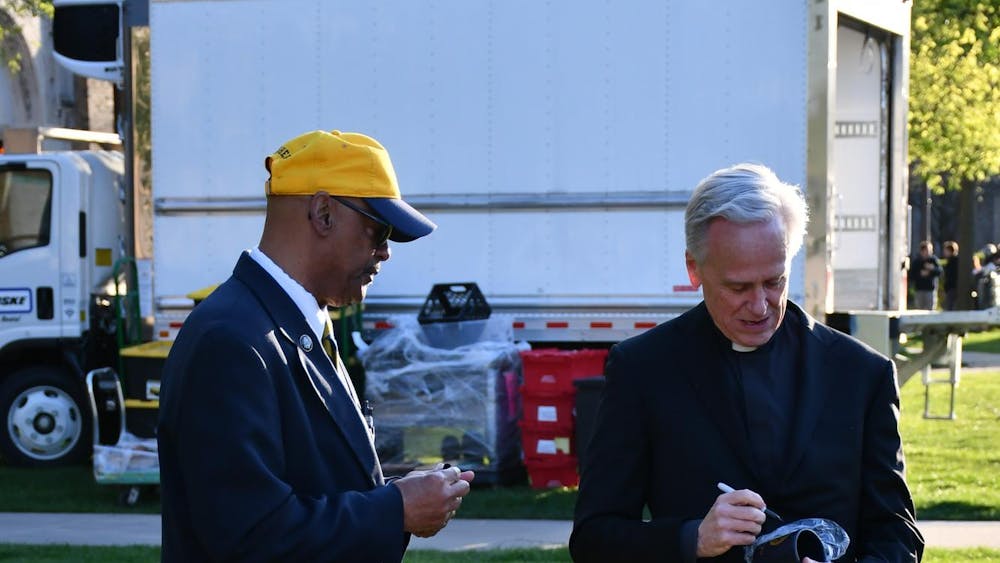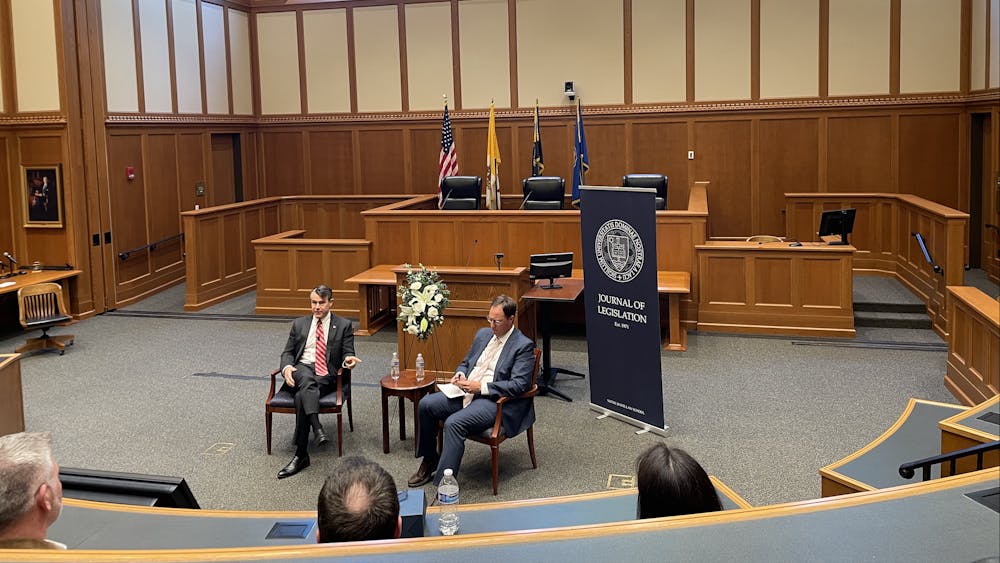On Sunday, Notre Dame faculty members, students and community members presented their robotics research at the Morris Inn ballroom in honor of National Robotics week, an event designated by Congress to promote and spark appreciation for the STEM fields — science, technology, engineering and math.
“The purpose of the event is to have outreach towards the community because a lot of people have never seen a robot before, and so the idea was we really wanted a way to tell the people about robotics,” Laurel Riek, assistant professor of computer science and engineering and director of Notre Dame’s National Robotics Week Event, said.
This year, students, professors and residents of the community displayed robots, some of which were autonomous, that have the potential to advance industries ranging from the health care industry, to the electric and nuclear power industry. Riek teaches a robotics class in which students write intelligent software for robots to use data from their sensors to make autonomous decisions.
Michael Gonzales, a PhD student working in Riek’s Robotics, Health and Communication Lab, has developed a method for virtual patients to express pain using technology such as Microsoft Kinect.
“My main research explores the use of robot sensing technology as a means for healthcare providers to interact with systems in a sterile manner,” Gonzales said. “We are pairing this technology with shared displays to aid in communication so that teams of providers can all be better aware of tasks being completed during procedures.”
Gonzales’s work is intended to shift training for health care professionals from verbal communication to visual communication.
“Our aim with this project is to augment procedures in healthcare situations so that errors in the clinical settings can be reduced,” Gonzales said.
Another noticeable project was a quadcopter that has the ability to follow objects which stand out from the background at its will. Depending on the location of the object, which was a large tennis ball at the event, the quadcopter moves to keep the object in the center of its built in camera screen.
In terms of the significance of this project, Thomas Luppi, a sophomore Electrical Engineering major, said the math behind getting helicopters to follow each other is analogous to making multiple power plants and streetlight systems work more efficiently.
“If you have 10 quadcopters near each other, it’s hard to get them all to work cooperatively, and this is just like how it is with power plants,” Luppi said. “The power plants have to communicate to ensure they are supplying the demand needed. Since the systems are very much alike, working on these helicopters will make power plants more efficient.”
In terms of the time that many of the students had to work on these projects, Riek said those in her class had under a month to create and improve the software for their robots.
“I am very lucky to have such amazing students. They are amazing, and what they can pull off is remarkable,” said Riek.













